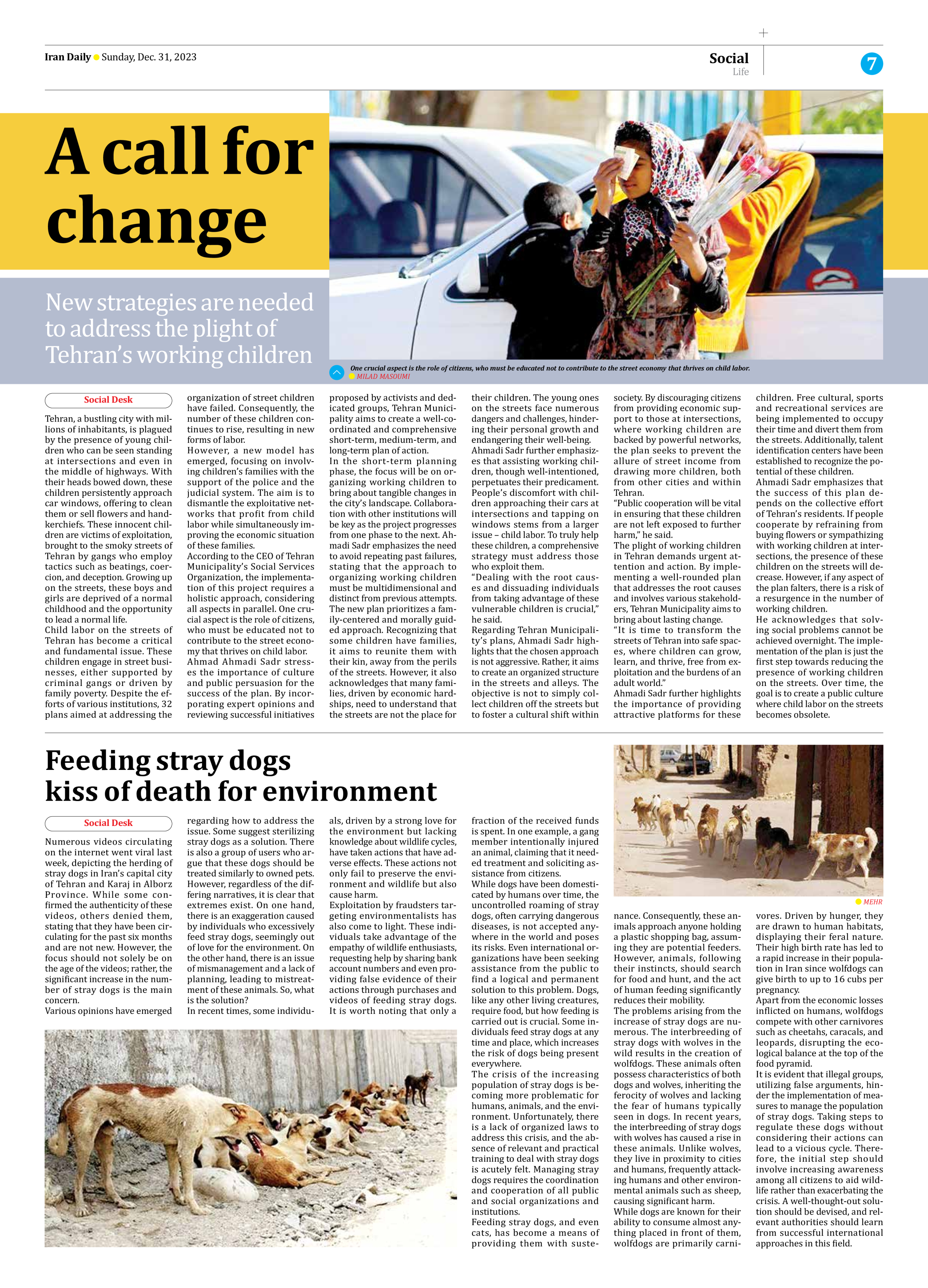
A call for change
New strategies are needed to address the plight of Tehran’s working children
Tehran, a bustling city with millions of inhabitants, is plagued by the presence of young children who can be seen standing at intersections and even in the middle of highways. With their heads bowed down, these children persistently approach car windows, offering to clean them or sell flowers and handkerchiefs. These innocent children are victims of exploitation, brought to the smoky streets of Tehran by gangs who employ tactics such as beatings, coercion, and deception. Growing up on the streets, these boys and girls are deprived of a normal childhood and the opportunity to lead a normal life.
Child labor on the streets of Tehran has become a critical and fundamental issue. These children engage in street businesses, either supported by criminal gangs or driven by family poverty. Despite the efforts of various institutions, 32 plans aimed at addressing the organization of street children have failed. Consequently, the number of these children continues to rise, resulting in new forms of labor.
However, a new model has emerged, focusing on involving children’s families with the support of the police and the judicial system. The aim is to dismantle the exploitative networks that profit from child labor while simultaneously improving the economic situation of these families.
According to the CEO of Tehran Municipality’s Social Services Organization, the implementation of this project requires a holistic approach, considering all aspects in parallel. One crucial aspect is the role of citizens, who must be educated not to contribute to the street economy that thrives on child labor.
Ahmad Ahmadi Sadr stresses the importance of culture and public persuasion for the success of the plan. By incorporating expert opinions and reviewing successful initiatives proposed by activists and dedicated groups, Tehran Municipality aims to create a well-coordinated and comprehensive short-term, medium-term, and long-term plan of action.
In the short-term planning phase, the focus will be on organizing working children to bring about tangible changes in the city’s landscape. Collaboration with other institutions will be key as the project progresses from one phase to the next. Ahmadi Sadr emphasizes the need to avoid repeating past failures, stating that the approach to organizing working children must be multidimensional and distinct from previous attempts.
The new plan prioritizes a family-centered and morally guided approach. Recognizing that some children have families, it aims to reunite them with their kin, away from the perils of the streets. However, it also acknowledges that many families, driven by economic hardships, need to understand that the streets are not the place for their children. The young ones on the streets face numerous dangers and challenges, hindering their personal growth and endangering their well-being.
Ahmadi Sadr further emphasizes that assisting working children, though well-intentioned, perpetuates their predicament. People’s discomfort with children approaching their cars at intersections and tapping on windows stems from a larger issue – child labor. To truly help these children, a comprehensive strategy must address those who exploit them.
“Dealing with the root causes and dissuading individuals from taking advantage of these vulnerable children is crucial,” he said.
Regarding Tehran Municipality’s plans, Ahmadi Sadr highlights that the chosen approach is not aggressive. Rather, it aims to create an organized structure in the streets and alleys. The objective is not to simply collect children off the streets but to foster a cultural shift within society. By discouraging citizens from providing economic support to those at intersections, where working children are backed by powerful networks, the plan seeks to prevent the allure of street income from drawing more children, both from other cities and within Tehran.
“Public cooperation will be vital in ensuring that these children are not left exposed to further harm,” he said.
The plight of working children in Tehran demands urgent attention and action. By implementing a well-rounded plan that addresses the root causes and involves various stakeholders, Tehran Municipality aims to bring about lasting change.
“It is time to transform the streets of Tehran into safe spaces, where children can grow, learn, and thrive, free from exploitation and the burdens of an adult world.”
Ahmadi Sadr further highlights the importance of providing attractive platforms for these children. Free cultural, sports and recreational services are being implemented to occupy their time and divert them from the streets. Additionally, talent identification centers have been established to recognize the potential of these children.
Ahmadi Sadr emphasizes that the success of this plan depends on the collective effort of Tehran’s residents. If people cooperate by refraining from buying flowers or sympathizing with working children at intersections, the presence of these children on the streets will decrease. However, if any aspect of the plan falters, there is a risk of a resurgence in the number of working children.
He acknowledges that solving social problems cannot be achieved overnight. The implementation of the plan is just the first step towards reducing the presence of working children on the streets. Over time, the goal is to create a public culture where child labor on the streets becomes obsolete.







